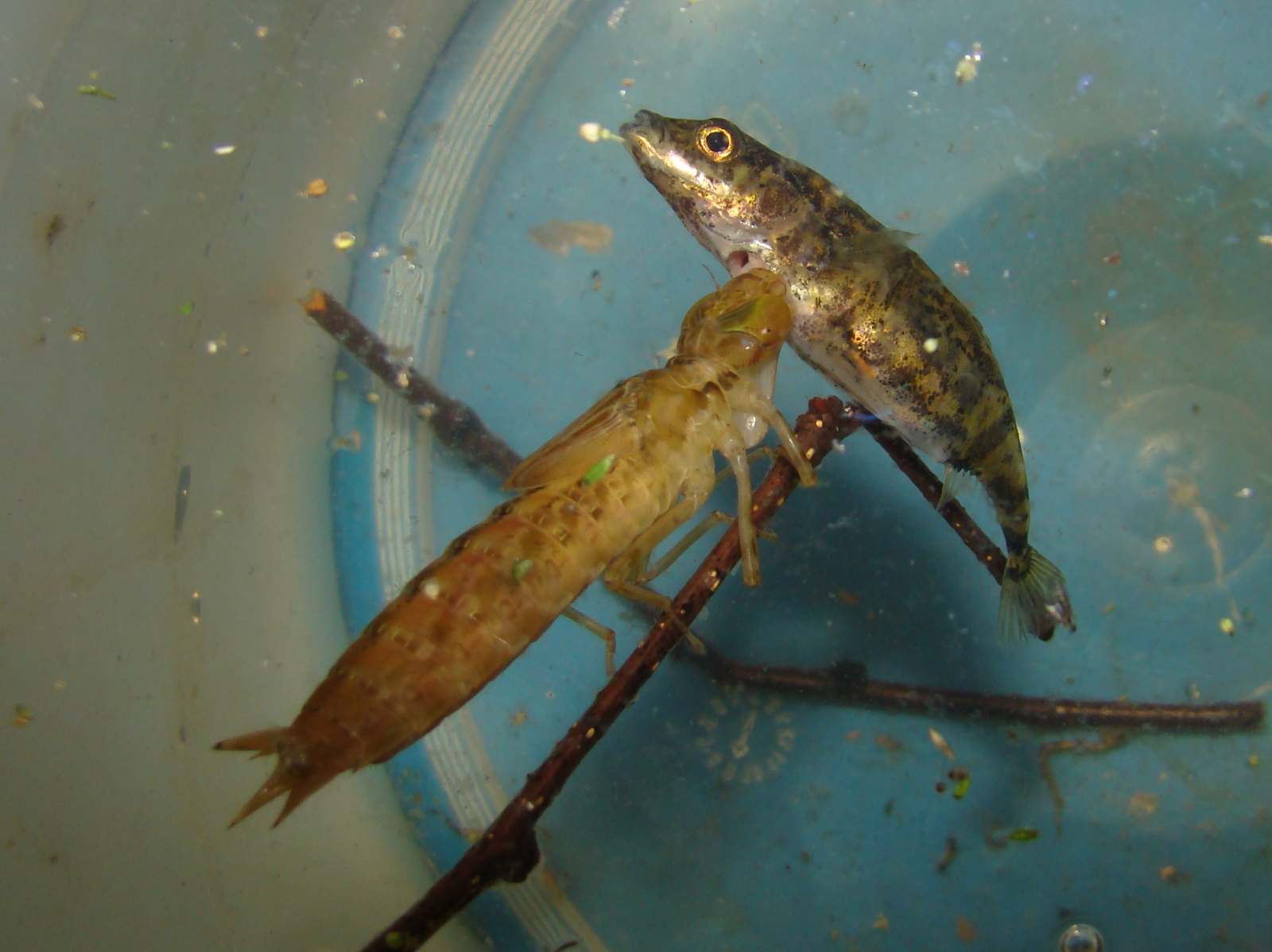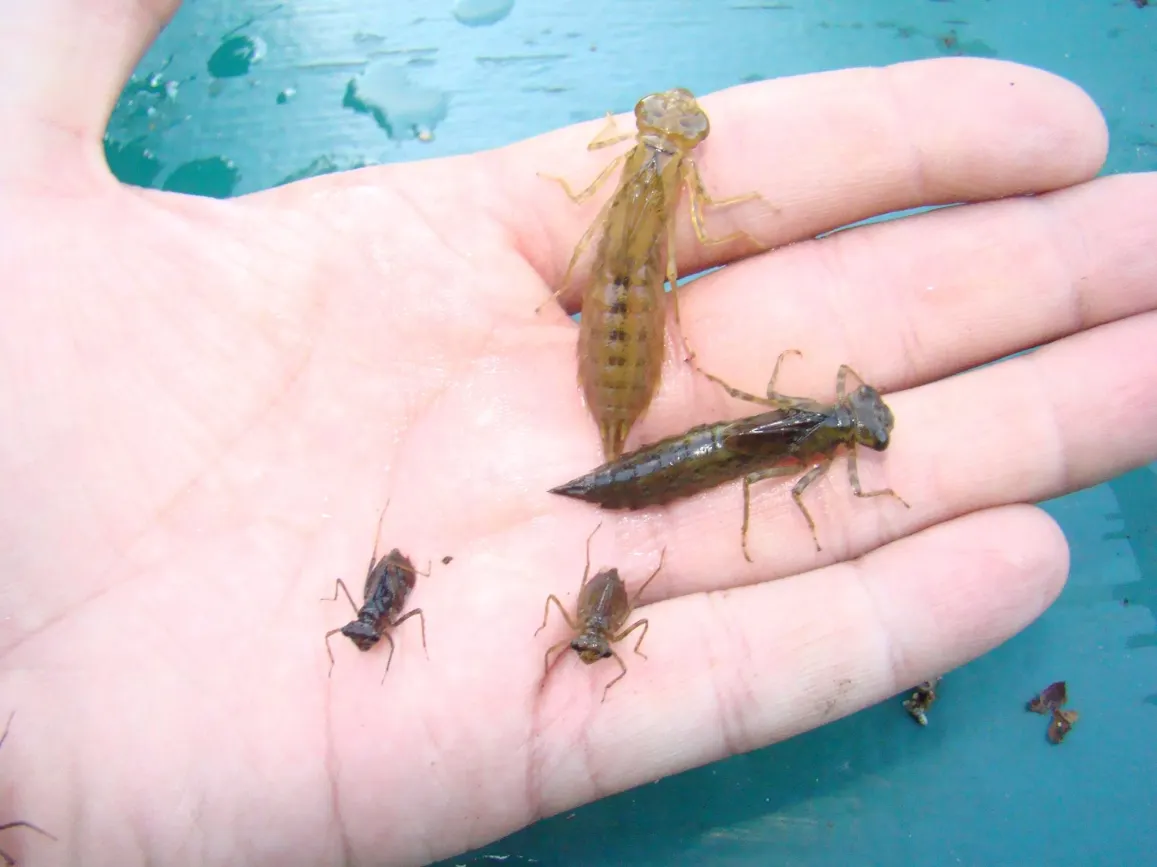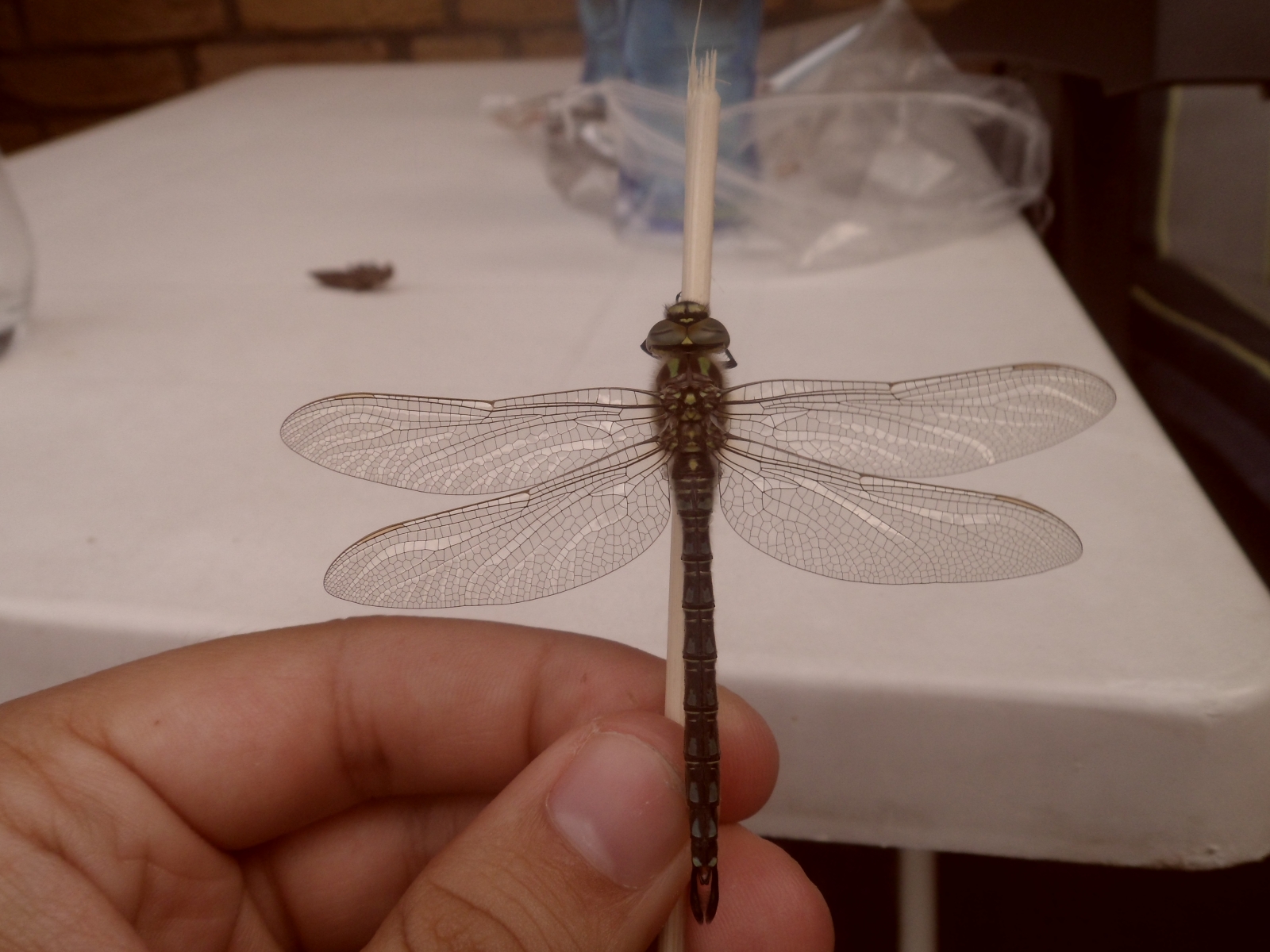Breeding dragonflies in captivity? Are you out of your mind?
No, I’m serious! First of all, breeding dragonflies is very hard to nearly impossible. Especially the adults require a ton of space as they are aerial predators; one must imagine you will need quite a large flight space including aerial prey insects for them, not to mention the correct lighting and temperature. And then they all have very specific needs regarding the bodies of water they would like to lay eggs in; while some species prefer small ponds or swamps, others will prefer open lakes and have very high demands regarding water quality. Though a few zoos have actually managed to introduce some species of dragonflies into their butterfly greenhouses, forget about it if you do not have such facilities!
Rearing them is however a different story. Though labor intensive, rearing dragonfly nymphs to adulthood can be a wonderful experience. I just release the adults!
 Anax imperator nymph destroys a stickleback fish; dragonfly nymphs are ferocious predators that will consume everything that moves – in some occasions mine even jumped out of the water towards the prey I was going to throw in the water!
Anax imperator nymph destroys a stickleback fish; dragonfly nymphs are ferocious predators that will consume everything that moves – in some occasions mine even jumped out of the water towards the prey I was going to throw in the water!
Though a shocking image for some, this dragonfly nymph devouring a fish paints the image of the predators they truly are.
This is what I do: I go to a local lake or pond, and catch as many nymphs as I can. The best ones to use are fully grown ones, as some species may take multiple years(!) to reach adulthood. But with patience, anything is possible.
The easiest way to rear them is probably to put them in a pond in your garden, and forget about them for several years. But I’m not a guy for the easy route! So what I do is I release them in clear plastic buckets of water, with some sticks for them to hold on. Important is to submerge objects in the water for them to hold onto, but also giving them the opportunity to climb out of the water before emergence.
 A nice catch! In stage it is possible to ID them, though very difficult. The nymphs are fully aquatic.
A nice catch! In stage it is possible to ID them, though very difficult. The nymphs are fully aquatic.
It seems the nymphs are very picky about water quality; for this reason I replace the water in the buckets every 2-3 days! Because this is so labour intensive, I never rear more than 4 or 5 individuals at the same time. They are carnivorous predators that will take live food exclusively; they seem to hunt based on movement, and their vision seems to rival that of mantids. They will tackle all organisms that are up to their own size including other dragonfly nymphs, small fish, tadpoles, drowning insects that fell into the water, mosquito and aquatic beetle larvae.. if it moves, they will eat it . The nymphs can propel themselves through the water by exerting pressure from their abdomen – it reminds me of the way squids move through through the water. If hungry and confident enough they will even jump out of the water to grab prey. It seems that with time, the nymphs become very used to being kept in captivity and go from shy feeders to overconfident, almost trying to grab the food from your hands when you put it in.
THE BIG MOMENT
Did you keep the container clean? Did regulary feed the nymphs a variety of live prey? Do the nymphs have the opportunity to climb out of the water if they need to? Did you not forget to rear them alone, as they are extremely cannibalistic and will voraciously feed on eachother until the biggest one is left? Well then congratulations; it may happen at any moment.. emergence!
 Anax imperator nymph holding unto a towel after it was observed climbing out of the water
Anax imperator nymph holding unto a towel after it was observed climbing out of the water
Interestingly, the entire adult becomes visible through the shell of the nymph prior to emergence. In the same fashion many butterflies can be seen through the pupal skin prior to emergence. It will clumsily stumble out of the water, hold unto an object tightly, and freeze in this position, to the point of hardly being able to move its legs (I suppose this kind of locking mechanism secures the legs and strongly attaches to them surface they are emerging on.
Some pictures of the emergence process:
 Aeshna grandis sliding from the nymphal skin
Aeshna grandis sliding from the nymphal skin
 Anax imperator on top of its old skin, ready to fly
Anax imperator on top of its old skin, ready to fly
 A fresh Anax imperator, one of the biggest and baddest dragonflies of my country!
A fresh Anax imperator, one of the biggest and baddest dragonflies of my country!
 A fresh Aeshna grandis after emerging, drying up before flying away
A fresh Aeshna grandis after emerging, drying up before flying away
 Ye dirty olde rearing container, primitive but it works
Ye dirty olde rearing container, primitive but it works
Dear reader – thank you very much for visiting! Your readership is appreciated. Are you perhaps…..
- Not done browsing yet? Then click here to return to the homepage.
- Looking for a specific species? Then click here to see the full species list.
- Looking for general (breeding)guides and information? Then click here to see the general information.
- Interested in a certain family? Then click here to see all featured Lepidoptera families.
Was this information helpful to you? Then please consider contributing here (click!) to keep this information free and support the future of this website. This website is completely free to use, and crowdfunded. Contributions can be made via paypal, patreon, and several other ways.
